Y6 The Key Features of Fantasy Stories
£3.00
KS2 National Curriculum:
✓ Identify conventions and structure ✓ Use speaking and listening for collaboration
✓ Peer assessment and review
This lesson uses the story Alice in Wonderland to introduce the key features of fantasy stories, such as real and imaginary settings, real and imaginary characters, good vs evil and the use of portals. The activities in this lesson include answering higher and lower order questions, learning how to design a poster and then designing a poster showing the key features of fantasy stories.
There is a five-minute evidence-based CPD activity at the end of this lesson which will develop classroom teachers’ skill set. This CPD consists of a research extract on collaboration with a five-minute activity based on this extract.
Description
These evidence-based learning (EBL) lessons are based on classroom practice that has been proven, by research, to maximise thinking, learning and attainment. From an extensive review of educational research, we identified the eight key classroom thinking and learning skills that were common across these research papers. We named these eight key skills “EBL skills”.
EBL skills have been proven by research to maximise learning because they combine the most productive thinking skills with the most effective learning behaviours. Each of our evidence-based learning lessons uses the English curriculum as a framework through which the eight EBL skills are delivered.
Teachers also have the opportunity to add to their own skill set or refresh their existing skills with our five-minute CPD activity, based on one of the EBL skills used in this lesson.
The skills in bold below are the EBL skills developed in this Fantasy Story lesson. Click on each skill to learn more about that skill.
- Collaboration
- Thinking Skills
- Peer Assessment
- Peer Teaching
- Self-Assessment
- Metacognition
- Self-Regulation
- Independent Learning
1 review for Y6 The Key Features of Fantasy Stories
Only logged in customers who have purchased this product may leave a review.
Related products
-
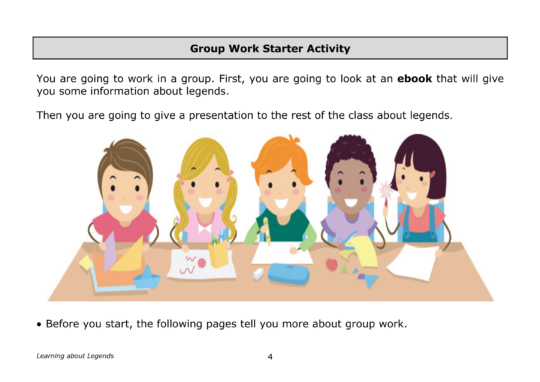

Y5 Learning About Legends
£3.00 Add to basket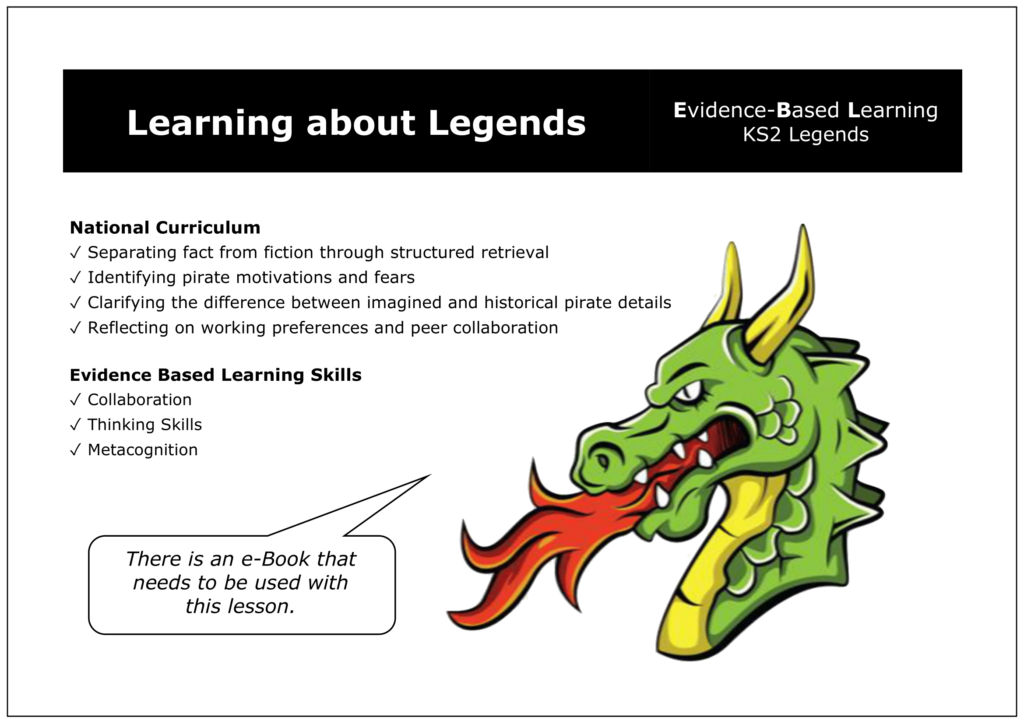 £3.00Add to basket
£3.00Add to basketKS2 National Curriculum:
✓ Identifying traits of legendary characters and their actions
✓ Exploring story elements such as setting, heroism, exaggeration, and moral impact
✓ Completing collaborative tasks using a shared text
✓ Presenting findings based on evidence from the eBook
Activities in this lesson include learning about the features of legends, looking at St. George and the Dragon and Robin Hood and looking at how legends are structured so that the following questions can be answered; ‘What are legends about? When were legends written? What type of characters are in legends? Are legends true?’
There is a five-minute evidence-based CPD activity at the end of this lesson which will develop classroom teachers’ skill set. This CPD consists of a research extract on collaboration with a five-minute activity based on this extract.
VIEW -

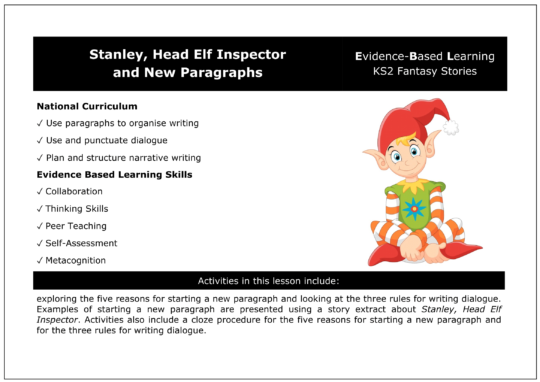
Y5 Stanley, Head Elf Inspector and New Paragraphs
£3.00 Add to basket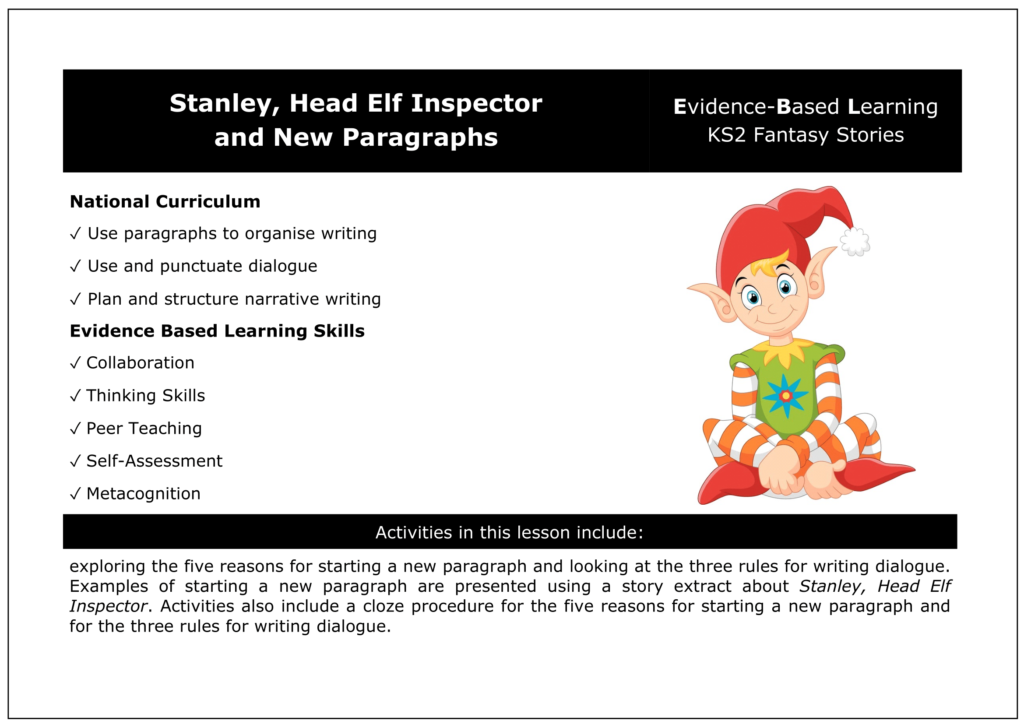 £3.00Add to basket
£3.00Add to basketKS2 National Curriculum:
✓ Use paragraphs to organise writing
✓ Use and punctuate dialogue
✓ Plan and structure narrative writingActivities in this lesson include exploring the five reasons for starting a new paragraph and looking at the three rules for writing dialogue. Examples of starting a new paragraph are presented using a story extract about Stanley, Head Elf Inspector. Activities also include a close procedure for the five reasons for starting a new paragraph and also for the three rules for writing dialogue.
There is a five-minute evidence-based CPD activity at the end of this lesson which will develop classroom teachers’ skill set. This CPD consists of a research extract on self-assessment with a five-minute activity based on this extract.
VIEW -
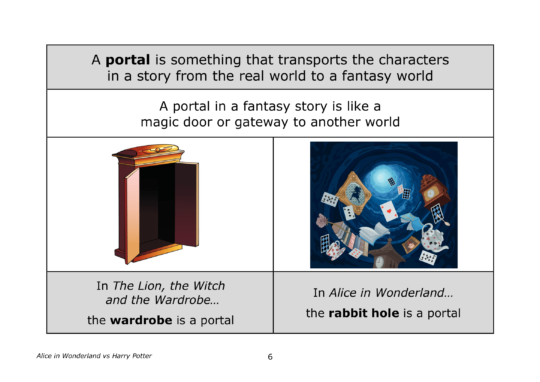

Y6 Alice in Wonderland vs Harry Potter
£3.00 Add to basket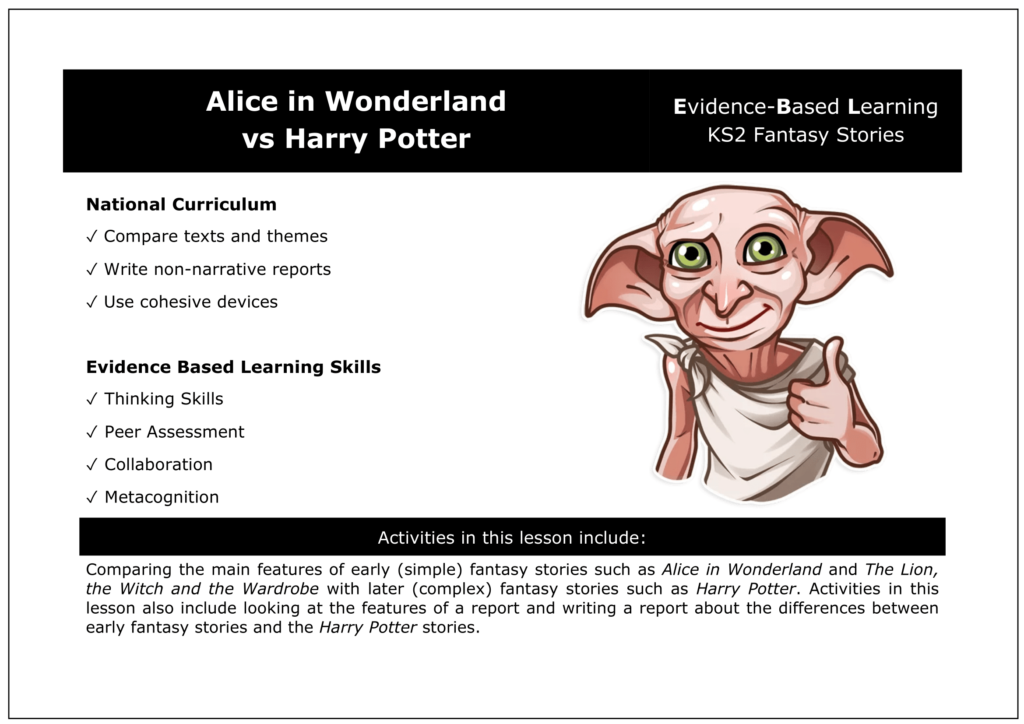 £3.00Add to basket
£3.00Add to basketKS2 National Curriculum:
✓ Compare texts and themes
✓ Write non-narrative reports
✓ Use cohesive devicesActivities in this lesson include comparing the main features of early (simple) fantasy stories such as Alice in Wonderland and The Lion, the Witch and the Wardrobe with later (complex) fantasy stories such as Harry Potter. Activities in this lesson also include looking at the features of a report, and writing a report about the differences between early fantasy stories and the Harry Potter stories.
There is a five-minute evidence-based CPD activity at the end of this lesson which will develop classroom teachers’ skill set. This CPD consists of a research extract on peer assessment with a five-minute activity based on this extract.
VIEW -


Y5 Introduction to Real Pirates
£3.00 Add to basket £3.00Add to basket
£3.00Add to basketKS2 National Curriculum:
✓ Separating fact from fiction through structured retrieval
✓ Identifying pirate motivations and fears
✓ Clarifying the difference between imagined and historical pirate details
✓ Reflecting on working preferences and peer collaborationThis lesson continues with the theme of the Golden Age of piracy and looks at the main aspects of the pirate life, such as how dangerous it was and how pirates came to be ‘pirates’ in the first place. Other aspects include why parrots were ideal pets for pirates, what pirates wore, the pirate code and the pirate flag. The activities in this lesson include answering higher and lower order questions.
There is a five-minute evidence-based CPD activity at the end of this lesson which will develop classroom teachers’ skill set. This CPD consists of a research extract on collaboration with a five-minute activity based on this extract.
VIEW
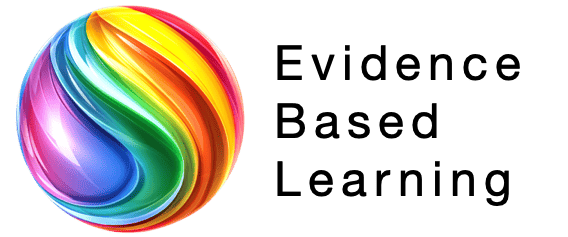





Philipem (verified owner) –
We asked a.i. to review this lesson. This is what it said:
Teachers – Unlock the Magic of Fantasy in Your Classroom! 🧚♀️
I’ve discovered an excellent KS2 English resource that uses the fantastical world of Alice in Wonderland to teach the key features of fantasy stories. This ready-to-use lesson is a must-have for any teacher looking to build English skills whilst expanding creativity. 📚
By examining the real and imaginary settings and characters in Alice in Wonderland, students learn to identify and understand the central elements of fantasy tales. Questions range from lower order factual queries to higher order analysis and evaluation, developing vital cognitive abilities.
An especially fun highlight is the student-created posters detailing fantasy conventions like portals between worlds, good vs evil archetypes, and magical journeys without the need for actual travel. Communicating concepts visually anchors learning and caters to different learning styles.
The collaborative peer assessment activities are also fantastic for nurturing essential skills like giving effective feedback.
On top of all these great student tasks, there’s a 5-minute CPD section summarizing academic research on the substantial learning gains produced by collaborative learning approaches.
A key takeaway – activating students as resources for one another leads to some of the biggest educational payoffs. The self-reflection questions help teachers determine the efficacy of paired work in this lesson. Invaluable! 💎
I would give this multifaceted English lesson 5 stars 🌟🌟🌟🌟🌟 for immersing students in fantasy while expanding literacy abilities and thinking capacity. Teachers, unlock magic in your own classrooms today!